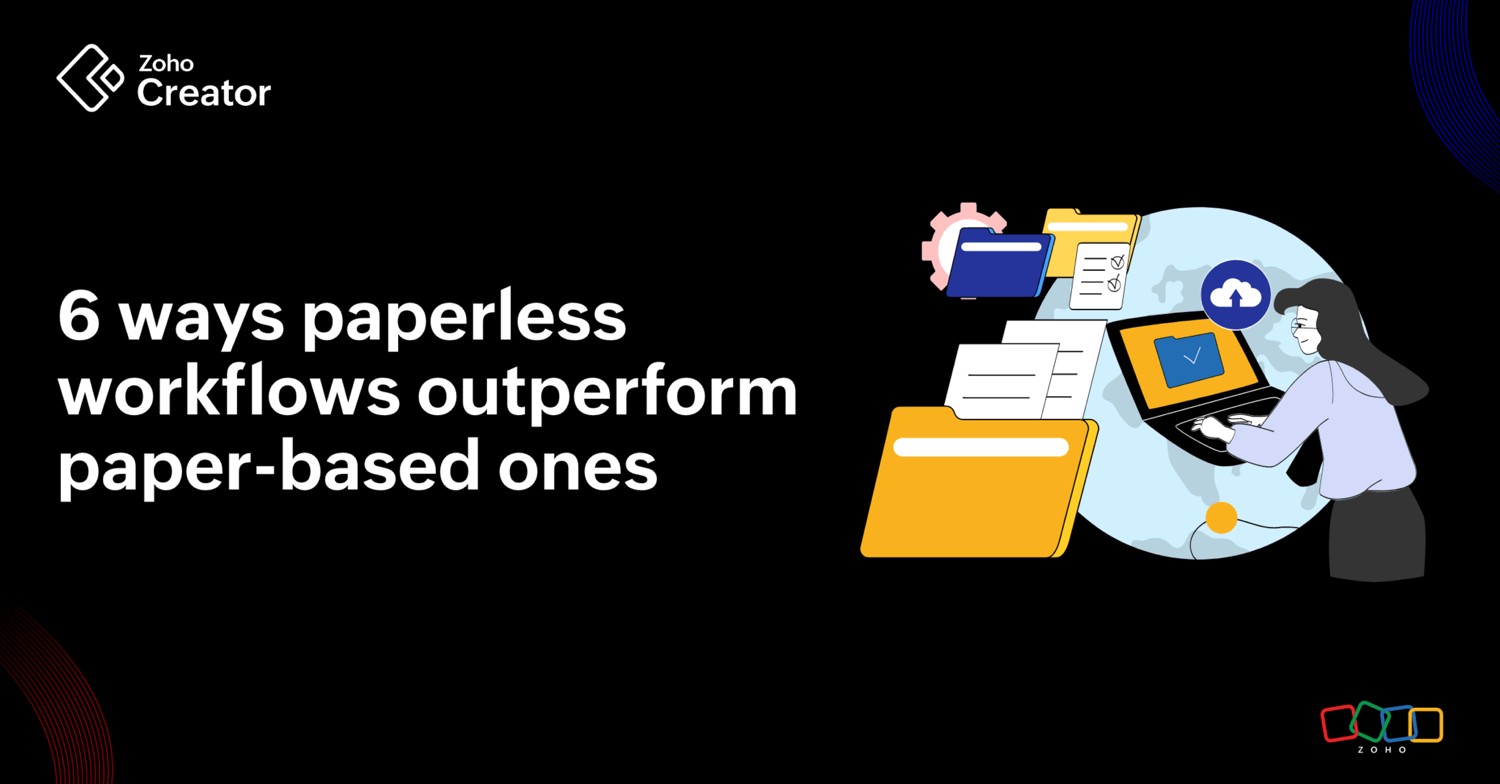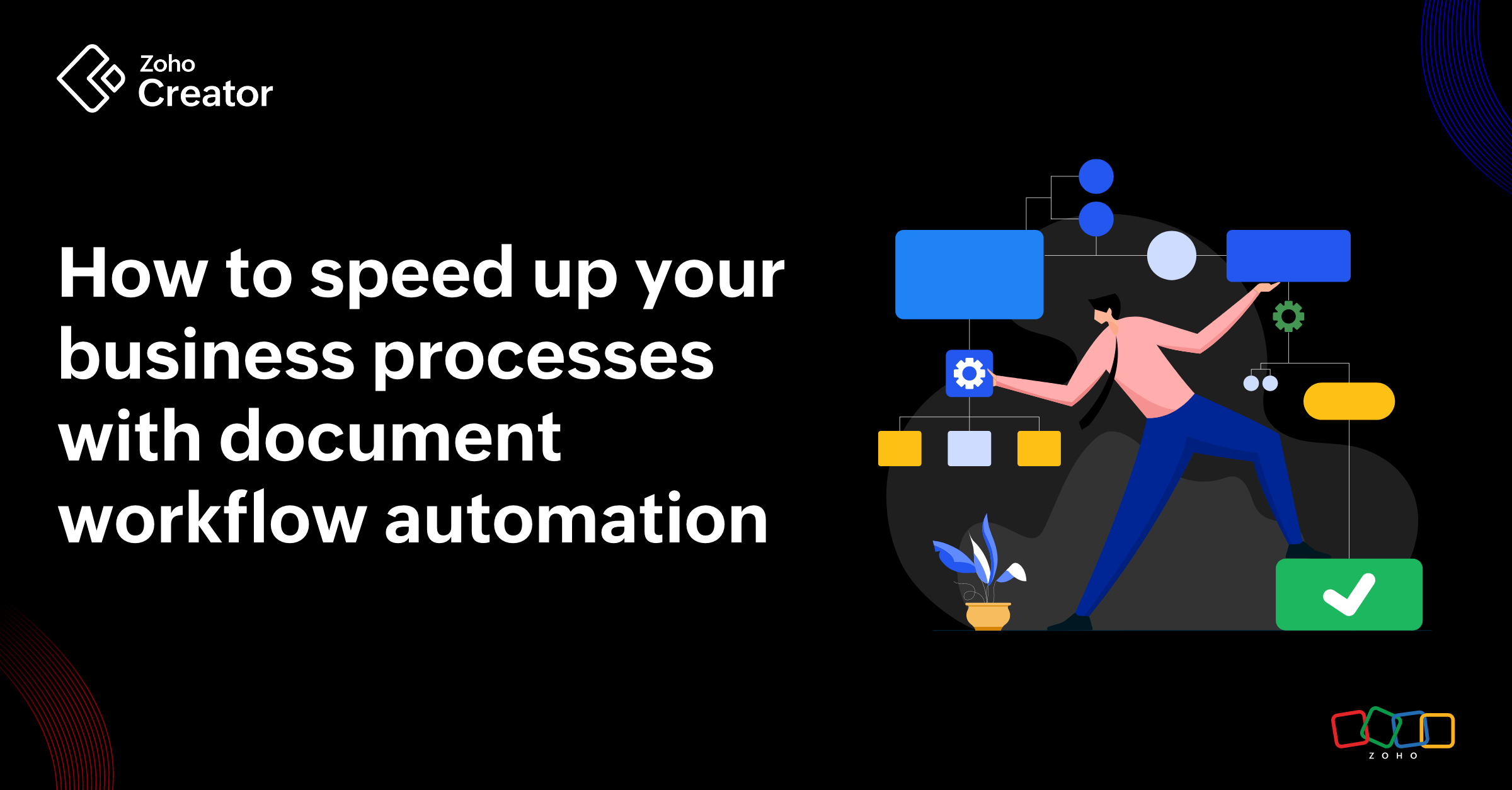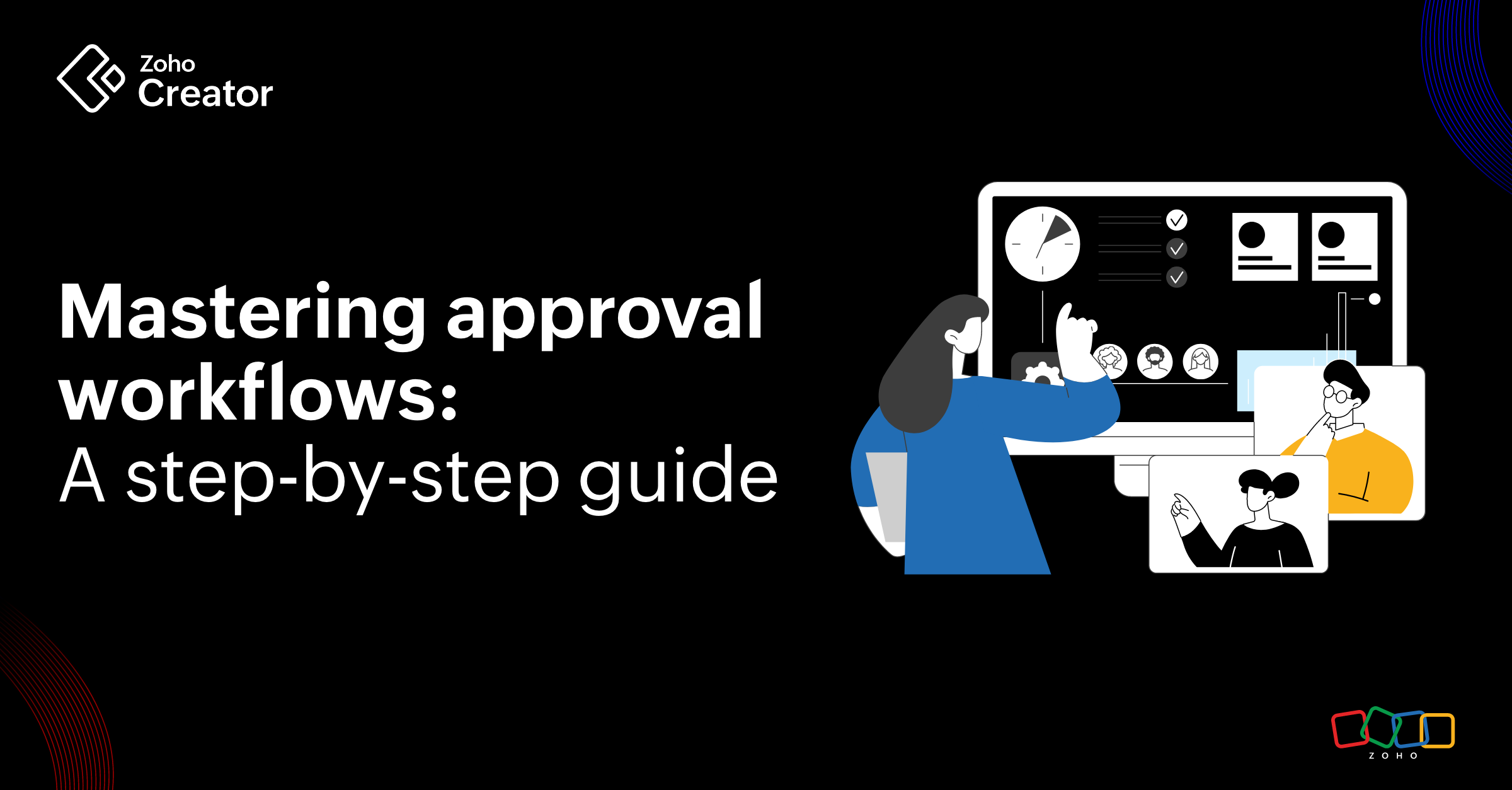- HOME
- Know Your Tech
- How to build a web app: A beginner's guide
How to build a web app: A beginner's guide
- Last Updated : October 17, 2024
- 514 Views
- 7 Min Read
Over the past 10 years, there has been a significant revolution in the process of developing web applications in the software development industry. The rise of low-code and no-code tools has democratized app development when, previously, creating web apps required substantial technical expertise in programming languages. Instead of requiring complex programming, these technologies enable both programmers and non-programmers to easily create fully functioning web apps through configuration and visual interfaces.
Before that, let's understand what web app development means in today's time!
What is application development?
Business has shifted online, and web apps assist organizations in streamlining processes, boosting output, and generating more revenue. A web-based interactive application stores and processes data, allowing both individual and group users to work together on projects via the internet. Users engage with these tools using their web browsers.
The process of developing software programs that fulfill specific requirements or offer users customized features is known as application development. This entails designing, creating, testing, and delivering software applications on a variety of platforms, including desktop computers, mobile devices, and web browsers.
What is a web application?
A web application is a type of software that can be used and accessed over the internet via a web browser. Unlike typical desktop applications, web apps do not require installation on the user's device. Instead, users can interact with them directly using a web browser on any device with internet access. Browsers make web applications compatible with the majority of operating systems and conventional computers.
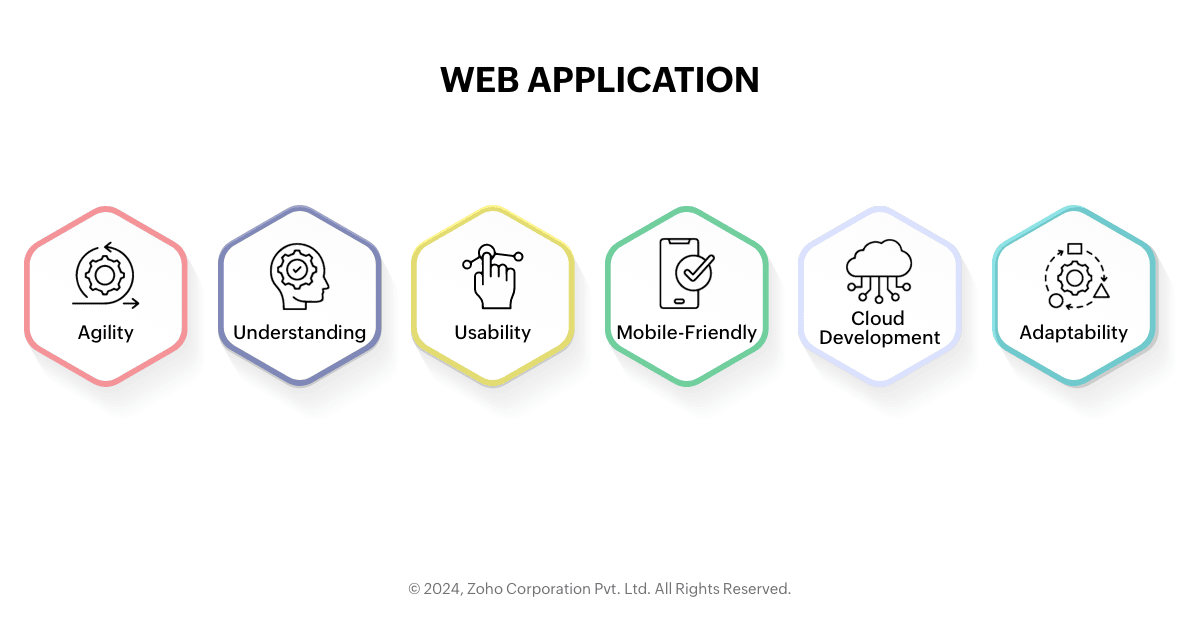
Low-code vs. a traditional development process
The process of web development can't be approached in a single way, much like any other type of development process. There is a wide variety of tools, processes, methods and standards present. One is the traditional app development process, and the other is newer technologies like low-code or no-code tools. Low-code development provides rapid development, reduced complexity, and enhanced productivity, making it ideal for projects with tight deadlines or limited resources.
Types of web apps
Web applications come in a variety of forms, all of which satisfy a unique set of requirements for both users and businesses. The following are some common web application types:
- Static web applications
- Dynamic web applications
- Progressive web applications
- Single-page applications
- Multiple-page applications

How to create a web app?
There are five different stages to creating a web application. The following are the steps on how to create a web app.
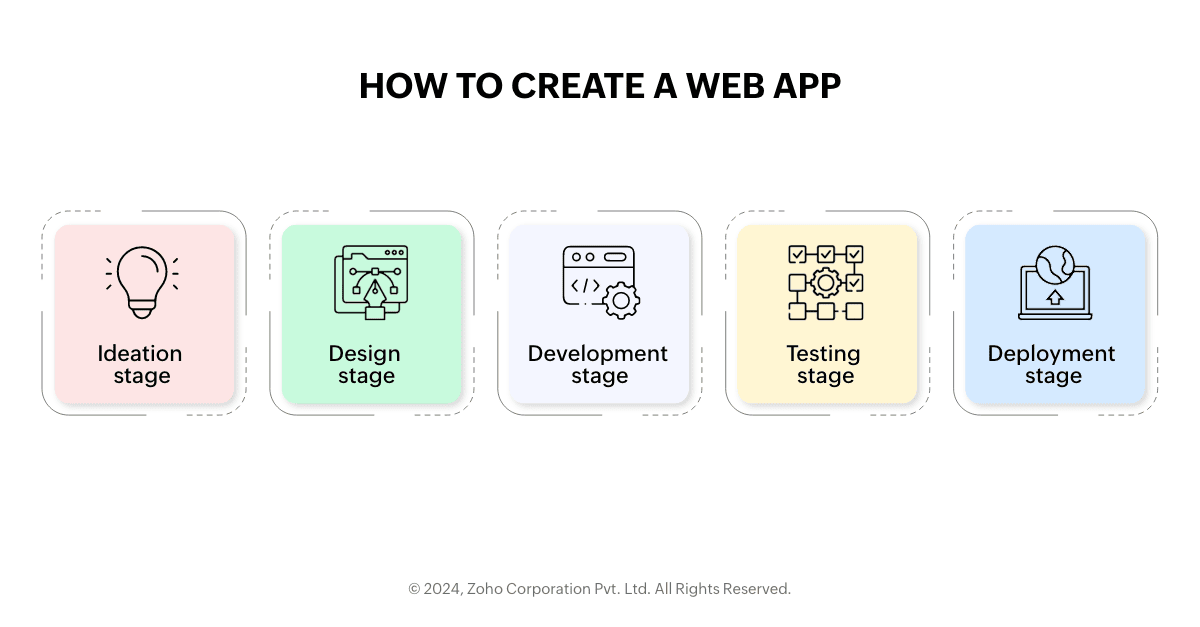
Step 1: Ideation
The first step in developing a new product is turning a web app idea into a workable product. This phase often involves developing a roadmap, researching the plan, and creating the main features of your web application and how it will differentiate itself from its competitors.
- Source an idea: Before developing a web app, you must first determine what you aim to construct and, more importantly, why you want to build it.
- For many, the most challenging step is coming up with the idea. By adopting the customer problem-solving technique, you may identify and communicate the shortcomings that consumers are encountering, and you can generate ideas for products that address the problems.
- Market research: After deciding on a web app idea, it is critical to perform market research to stay ahead of your competitors. Market research is essential for organizations of all sizes and industries because it gives vital information about market conditions, competitors, customers, and trends.
- Define the app's functionality: Now that you have your idea and the market has been proven, it's time to list all the features you would like your web app to have. Make a list of features that will solve the problem at hand. It's critical to zero in on the features that address the issues faced by your target market and to develop web app features solely to address these.
Step 2: Design
Designing a web application begins with a deeper grasp of the user interface (UI) and user experience (UX). The design stage of developing a web app is critical to building a user-centric, visually appealing, and functioning application. It guarantees that the web app fits user expectations, matches with company objectives, saves money and time, and provides a competitive edge in the market.
- Map out the workflow: A blueprint is essential since it will help you create the structure and go one step further by assisting you in integrating an interactive display into your web application. By planning the workflow, designers may build a seamless and intuitive user experience. By defining the user journey and interaction flow, designers can ensure users can explore the app, discover information, and execute tasks promptly.
- Sketch your web app: Start by sketching out the UI structure of your web application; it doesn't have to be precise. Describe the functionality of your app and avoid making the design too complex. Subsequently, develop a basic but complete version of the app that highlights its primary functionalities.
- Create a wireframe of the frontend: Prototyping is the process of creating an interactive display, whereas wireframing is the design of your web application's framework. It will provide you with a clickable prototype to help you see the concept in action. You can view how the website looks by clicking on various interactive buttons, and you can then make modifications to the web app design to meet your needs. Using a no-code or low-code platform, you can wireframe and prototype your application.
Step 3: Development
The web app development stage is where you'll build the actual application. This step comes after the planning and design phases and entails transforming wireframes, prototypes, and specifications into working software. Developers build frameworks, deploy APIs, add features and functionalities, implement web application security layers, and the like.
- Create your database: A database is simply a collection of data. Data can be kept on a server's hard drive, memory, or both. A database management system (DBMS) is a system that provides consistent application programming interfaces (APIs). The database, which is a server, stores your online or mobile app code. The database handles all of your program's daily operations. Your web application's database type will depend on the kind of data you need to store and the tasks your users must complete.
- Develop the frontend of the web application: The frontend is the interface that users interact with. It is the application's visual element that is created using a coding language. It can be created using HTML, CSS, and JavaScript, or the framework can be set up on a no-code or low-code platform.
- Develop the backend of the web application: The application's logic and data are stored on the backend, which can operate on a server. Although building a backend requires specialized developers, many of the complications can be eliminated using low-code or no-code tools.
- Integrate frontend and backend using APIs: To integrate the frontend and backend of a web app utilizing APIs, communication must be established between the application's client-side (frontend) and server-side (backend). APIs act as a link, allowing the frontend to submit queries to the backend and get results.
Step 4: Testing
During the web app development process, testing is an essential step, and the app is thoroughly tested to make sure it satisfies quality standards, works as expected, and offers an exceptional user experience.
- Test and fix bugs: Before you release the web app, make sure it works properly. Try using it in run mode to check if it performs as planned. It is essential to test web apps in various environments to make sure they function correctly and perform well in a range of conditions. Development, testing, staging, and production are examples of testing environments. Once the issues are identified, make sure to fix all bugs to build progressive web applications.
Step 5: Deployment
Launching the finished product is the last step in the web app development process. Choose a location to host the web app and launch it for users. Running your web application on a specific server is a component of hosting. The deployment process is how your web application gets from source control on your machine to cloud hosting.
- Host and deploy your app: To make your web app available in the cloud, you must first select a host. It will be available to users from any location on the globe. The web application should then be deployed. This phase involves transferring your web application from the computer to a cloud hosting provider.
How web apps can help businesses transform digitally
Web applications can help businesses streamline operations, boost efficiency, collaborate more effectively, and create better customer experiences. The way that large enterprises develop and implement web apps has been transformed by low-code development tools. These platforms provide a variety of benefits that can have a substantial impact on business operations, productivity, and innovation.
With a low-code development platform like Zoho Creator, enterprises can quickly deploy solutions that meet specific business requirements by building customized web apps without requiring a lot of coding. Whether it's managing customer relationships, optimizing company processes, or boosting data analytics, Zoho Creator offers a versatile and cost-effective platform for enterprise app building.
Click below to delve into the world of application development.
 Aishwarya
AishwaryaAishwarya is a content marketer at Zoho. Apart from creating content, she loves to read and watch sci-fi and crime thrillers, travel, and basically can't survive without coffee.









